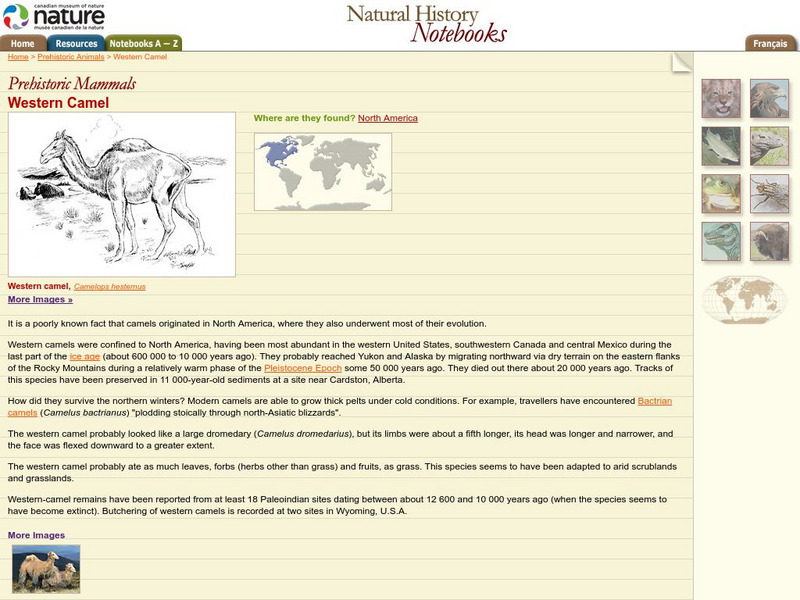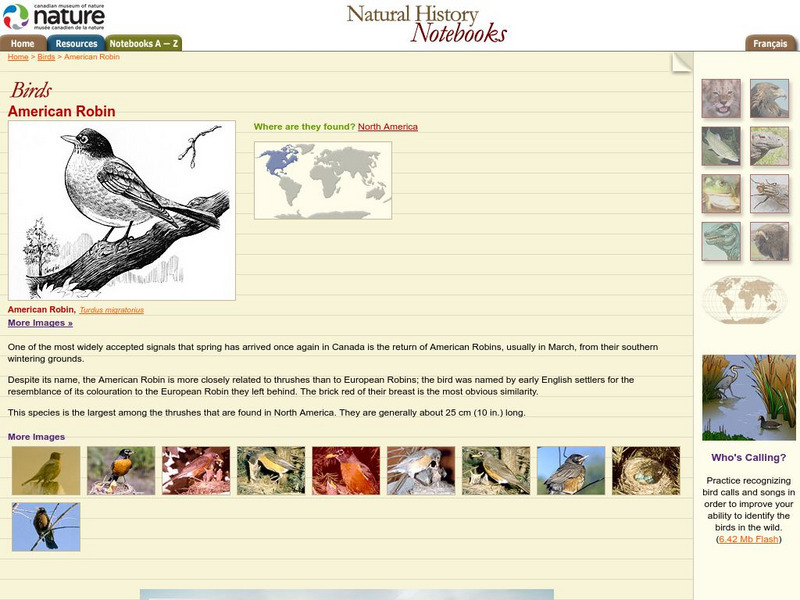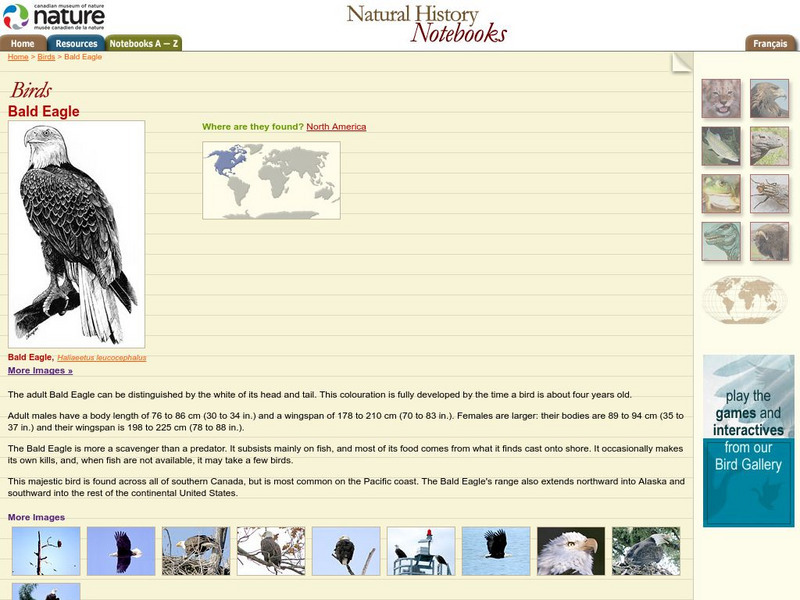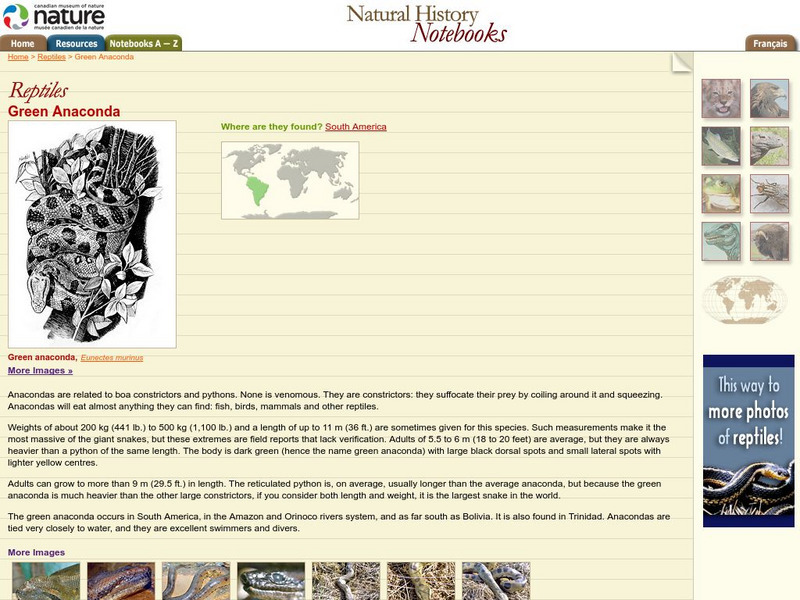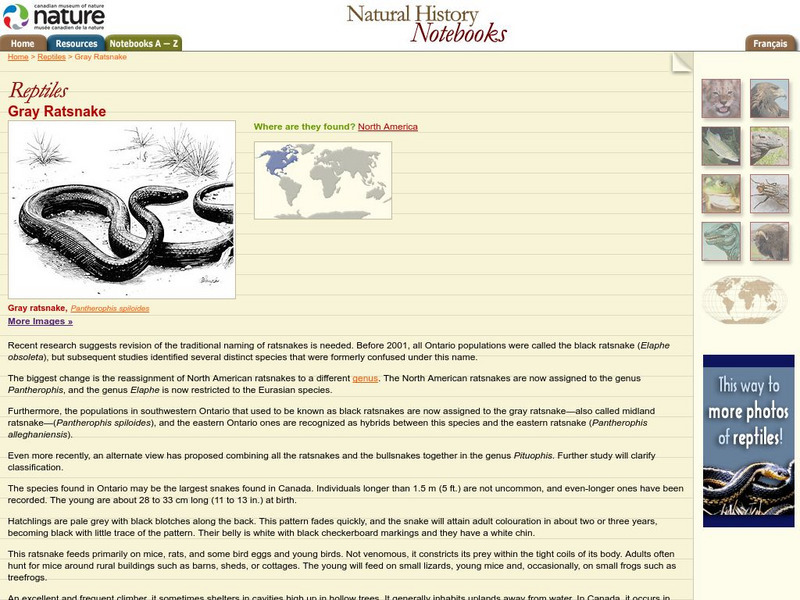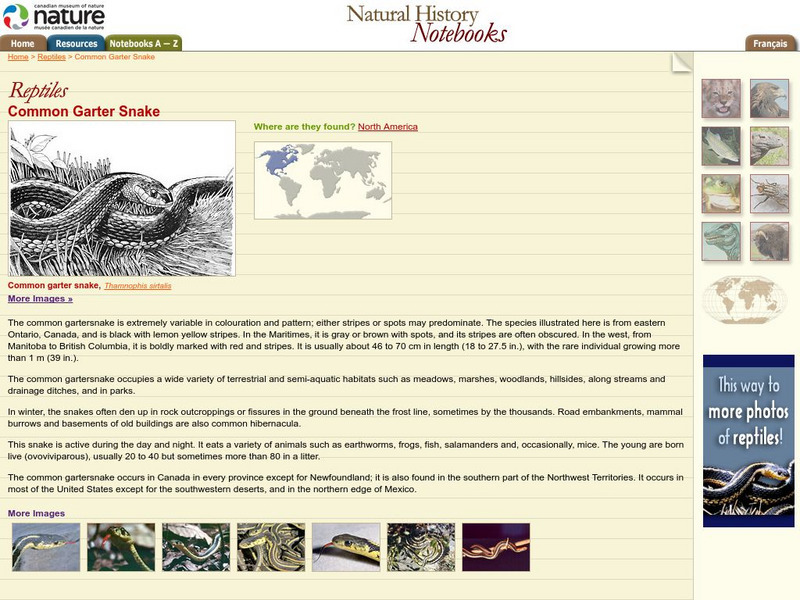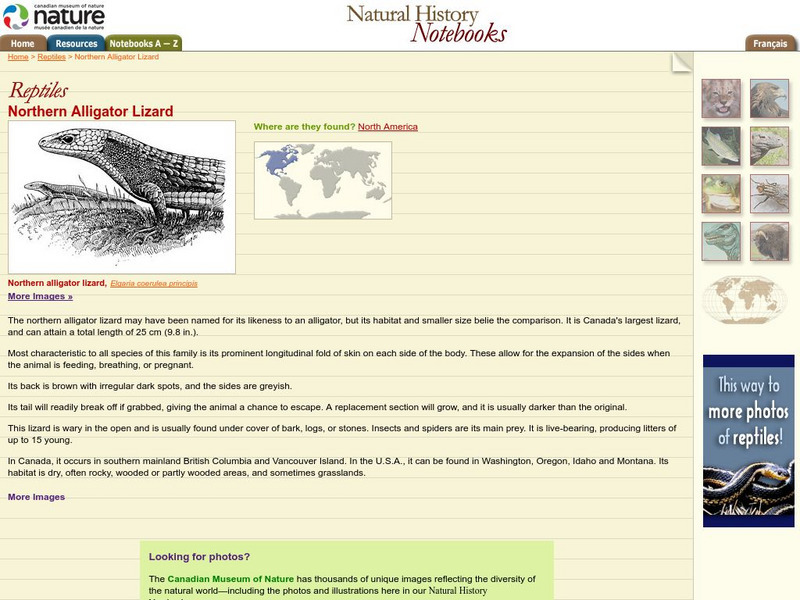Canadian Museum of Nature
Canadian Museum of Nature: Bird Identification Clues
This resource will help you develop your birdwatching skills. It includes how to find birds, basic tips and how to use field marks such as patterns and colours to help distinguish species.
Canadian Museum of Nature
Canadian Museum of Nature: Yellow Spotted Salamander
With a number of images and text, characteristics of the Yellow-spotted Salamander are discussed.
Canadian Museum of Nature
Canadian Museum of Nature: Yukon Horse
Find out about the Yukon Horse, an extinct animal that covered much of North America at one time.
Canadian Museum of Nature
Canadian Museum of Nature: Western Camel
Read about this extraordinary mammal, the Western Camel, that originated in North America during the ice age. A fascinating article with many additional sites to explore.
Canadian Museum of Nature
Canadian Museum of Nature: African Buffalo
The African buffalo lives in the forests of Central Africa. It is a fearsome animal when threatened. Details about the African buffalo can be found here along with photos.
Canadian Museum of Nature
Canadian Museum of Nature: Bactrian Camel
Bactrian camels are found wild in the Gobi Desert, and in the grasslands of China and Mongolia. Details about this animal can be found here along with photos.
Canadian Museum of Nature
Canadian Museum of Nature: Brown Rat
Brown rats are the ones that can carry diseases to humans and are loathed and feared by many. Details about this animal can be found here.
Canadian Museum of Nature
Canadian Museum of Nature: Northern Leopard Frog
Here, the Northern Leopard Frog, a popular frog throughout North America, is described in succinct detail.
Canadian Museum of Nature
Canadian Museum of Nature: Great Auk
A profile of the extinct Great Auk is provided here by the Canadian Museum of Nature.
Canadian Museum of Nature
Canadian Museum of Nature: Bobcat
Bobcats are sometimes confused with lynxes but are smaller and have more spots. Some facts and pictures can be found here.
Canadian Museum of Nature
Canadian Museum of Nature: Common Nighthawk
Briefly described are the location and characteristics of the Common Nighthawk. Nine excellent photographs are also included.
Canadian Museum of Nature
Canadian Museum of Nature: Common Loon
The Common Loon is the provincial bird of Ontario. Described are it's characteristics, offspring, and migratory patterns. Ten beautiful images capture this majestic bird in its environment.
Canadian Museum of Nature
Canadian Museum of Nature: Black Capped Chickadee
Have you heard the bird call, "Chicka-dee-dee-dee"? This familiar call belongs to New Brunswick's provincial bird. Briefly described are its song, features, food and habitat. Included are ten beautiful close up photographs.
Canadian Museum of Nature
Canadian Museum of Nature: Barn Swallow
Briefly described are the characteristics, food, and habitat of the Barn Swallow. Included are ten beautiful photographs.
Canadian Museum of Nature
Canadian Museum of Nature: American White Pelican
Did you know that the awkward looking pelican is very graceful in flight? Briefly described are its features, habitat and young. Seven excellent photographs showcase this bird in its environment.
Canadian Museum of Nature
Canadian Museum of Nature: American Robin
The robin usually signals the arrival of spring in Canada. This brief description of the robin includes ten excellent pictures of the bird and its young.
Canadian Museum of Nature
Canadian Museum of Nature: Bald Eagle
Described, briefly are the Bald Eagle's characteristics, food and location. Ten beautiful photographs showcase this majestic bird.
Canadian Museum of Nature
Canadian Museum of Nature: Anaconda
Did you know that a full grown Anaconda can weigh as much as 200 K g (441 lb.)? This is just one of the interesting facts that describe this reptiles features and habitat. Seven photographs provide excellent close up views.
Canadian Museum of Nature
Canadian Museum of Nature: Gray Ratsnake
Previously known as black ratsnakes, the gray ratsnake is one of the largest snakes found in Canada. Described are its characteristics, young and food.
Canadian Museum of Nature
Canadian Museum of Nature: Garter Snake
Did you know that the common garter snake can be found in every province in Canada, except Newfoundland? This is just one of the interesting facts presented along with eight close up photographs.
Canadian Museum of Nature
Canadian Museum of Nature: Boa Constrictor
The boa constrictor is not venomous, but kills its pray by constriction. Described at the boa constrictor's characteristics, young, habitat and pray. Included is one close up image.
Canadian Museum of Nature
Canadian Museum of Nature: Northern Alligator Lizard
The northern alligator lizard is Canada's largest lizard. Described are its characteristics, and habitat.
Canadian Museum of Nature
Canadian Museum of Nature: Indian Gavial
The Indian gavial is one of the rarest crocodile species in Asia. Described at its characteristics, young. Included is one photograph.
Canadian Museum of Nature
Canadian Museum of Nature: Galapagos Land Inguana
Today, very few of the Galapagos land iguanas exist. Described are their characteristics, food, and reproduction. Eight photographs show this iguana close up in its habitat.





